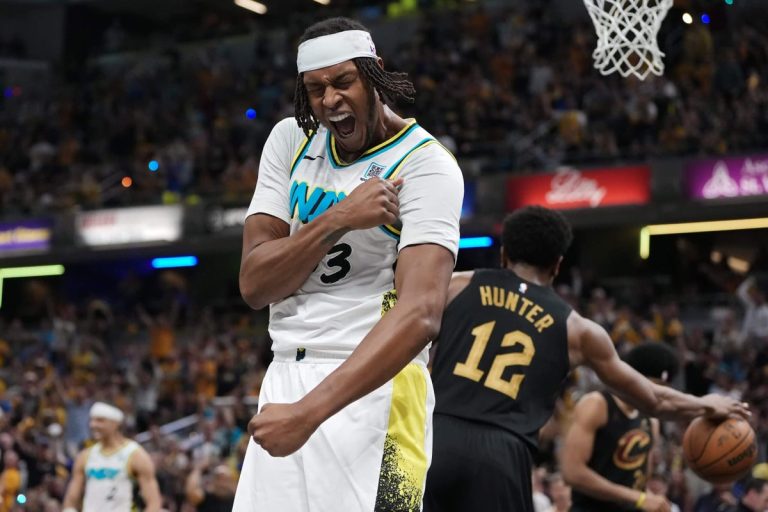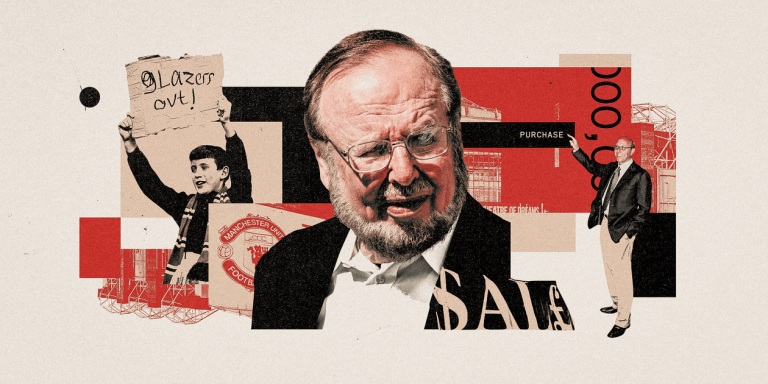A streak of otherworldliness ran all the way through David Crosby’s long, complicated life in music. It was in his voice, a reedy, quavering high tenor that could sound like he was pondering every line he sang. He was also happy to dissolve that voice, and the ego it implied, into shared vocal harmonies: with the Byrds, with Crosby, Stills & Nash (and Young) and with his 21st-century group, the Lighthouse Band.
There was otherworldliness, too, in the hovering harmonies he loved: the hypnotic modal patterns he picked on guitar and the ambiguous jazz chords that could lead in multiple directions. While Crosby, who died on Wednesday at 81, sometimes touched down in topical songwriting — a role he described as being a “town crier” — more often his lyrics were full of what-ifs and reflections on time, consciousness and eternity.
In the 1960s, Crosby was a prime mover in the Los Angeles music scene that spun together folk, rock, country and psychedelia. He was a founding member and a secondary but innovative songwriter in the Byrds. He was an integral part of what became the Laurel Canyon coterie of songwriters in Los Angeles, and he also forged connections to psychedelic San Francisco.
Crosby’s personal life was calamitous enough in the 1970s and 1980s — cocaine and heroin addiction, jail time, medical crises, financial ruin — for him to chronicle it in two older-but-wiser autobiographies: “Long Time Gone” and “Since Then: How I Survived Everything and Lived to Tell About It.” Throughout his career, close musical collaborations gave way to harsh acrimony.
But his music told different stories. Shaped by the upheavals of the 1960s, his songs held crosscurrents of freedom and disorientation, of seeking and disillusionment, of yearning and alienation and, later, of seasoned reflection. In 2014, at 72, he restarted what turned out to be a prolific solo career with “Croz,” the first of five studio albums he released in the next seven years; there were live recordings, too. His voice, amazingly enough, held up for his final creative surge. It sounded gentle and selfless, humbled and purified by time.
Here, in chronological order, are 15 songs spanning David Crosby’s six-decade career.
The Byrds, ‘I See You’ (1966)
Is it a love song or a rush of hallucinations? Written by Crosby and Jim McGuinn (who would later rename himself Roger), “I See You” shows their shared interest in Indian music and John Coltrane’s jazz. They sing about “Warm sliding sun through the cave of your hair” over a galloping backbeat, with early hallmarks of Crosby’s songwriting: a modal drone in the verses, a meter shift to change things up.
The Byrds, ‘Everybody’s Been Burned’ (1967)
Crosby sings with bittersweet patience about the pain of love gone wrong, as drums tick along and guitars entwine. But there’s a twist; he’s actually talking himself into taking another chance.
The Byrds, ‘Mind Gardens’ (1967)
An artifact of psychedelia’s experimental heyday, “Mind Gardens” is a parable about protection and openness, with an Indian-tinged vocal line rising above a multitracked, droney web of guitar picking: acoustic and electric, picked and sustained, running forward and backward and completely reveling in disorientation.
The Byrds, ‘Triad’ (1968)
In one of the disputes that led to Crosby leaving the Byrds, the band recorded his taboo-testing song about a ménage a trois — “Why can’t we go on as three?” it asked — but refused to include it on “The Notorious Byrd Brothers,” an album that marked the Byrds’ turn toward country-rock. The song would emerge anyway: first with the Jefferson Airplane, later on “Four Way Street” by Crosby, Stills, Nash & Young.
Crosby, Stills & Nash, ‘Long Time Gone’ (1969)
Written after the murder of Robert F. Kennedy, “Long Time Gone” seethes with bitter frustration, from its ominous organ chords to Stephen Stills’s gnarled guitar fills. There’s open desperation in Crosby’s voice as he exhorts, “Speak out against the madness/You’ve got to speak your mind if you dare.”
Crosby, Stills & Nash, ‘Wooden Ships’ (1969)
Crosby had a lifelong fondness for boats. Writing with Paul Kantner (of Jefferson Airplane) and Stills, in “Wooden Ships” he offered a grim but hopeful post-apocalyptic scenario. Survivors from opposite sides of a war, who don’t even know “who won,” share their meager supplies, deciding they can be “free and easy” on the water.
Crosby, Stills & Nash, ‘Guinnevere’ (1969)
“Guinnevere” was Crosby’s supreme enigma. The lyrics compare an unnamed “milady” to the adored but absent Guinnevere, who “drew pentagrams” on the wall and “had green eyes like yours.” Crosby, Stills and Graham Nash harmonize over two electric guitars picking modal chords, hinting at fleeting syncopations and suddenly declaring, “She shall be free.”
Crosby, Stills, Nash & Young, ‘Almost Cut My Hair’ (1970)
Boomers can remember when the length of a man’s hair signified a political allegiance. While Stills and Neil Young set up a lead-guitar duel behind him, Crosby sings with his most intense near-rasp, feeling paranoia — “like lookin’ at my mirror and seeing a police car” — but deciding he was “letting my freak flag fly” anyway.
Crosby, Stills, Nash & Young, ‘Dèjá Vu’ (1970)
“Don’t you wonder what’s going on down under you?,” the members of this supergroup harmonized at a key moment in this wonderfully complex musical and verbal construction. Guitars, harpsichord, drums, scat-singing and vocal harmonies ebb and flow through the song, all delivered as if it were simple and homespun.
David Crosby, ‘Laughing’ (1971)
In 1971, Crosby released his perfectly atmospheric solo debut album, “If I Could Only Remember My Name,” backed by members of the Grateful Dead and Jefferson Airplane as well as Joni Mitchell, who joined the backup harmonies on this song. Crosby sings about a failed spiritual quest — finding “only reflections of a shadow that I saw” — and Jerry Garcia’s pedal steel guitar floats above him as he finds acceptance.
David Crosby, ‘Orleans’ (1971)
In this elaborate miniature, an eerie chorale of vocal harmonies carries the names of places in France; then guitar counterpoint takes over, sketching a melody just once before letting it fall away.
David Crosby, ‘Holding On to Nothing’ (2014)
There’s more than a hint of Crosby’s lifelong admiration for Mitchell in “Holding On to Nothing,” with its calmly strummed, eccentric chords and asymmetrical melody. From “Croz,” which was his return to making solo albums after 20 years, “Holding On to Nothing” meditates on time, longing, depression and persistence, feeling like “a stranger just passing through.”
David Crosby, ‘The Us Below’ (2016)
In a song from “Lighthouse,” the album that inaugurated Crosby’s years of collaboration with Michael League of Snarky Puppy, Crosby gazes at the vast distances between stars and wonders, “Why must we be eternally alone?” But gradually, layer by layer, guitar patterns and vocals waft in and interlock, suggesting that we’re not.
David Crosby, ‘Curved Air’ (2017)
Even in his last years, Crosby was trying new approaches. “Curved Air” — written with his son, James Raymond — is briskly percussive and rhythmically unpredictable, with flamenco-like handclaps and a bass line that talks back to him. The lyrics wish for “a little traction here/A little solid ground,” yet as the melody hops around, Crosby is entirely sure-footed.
David Crosby, Michael League, Becca Stevens and Michelle Willis ‘Balanced on a Pin’ (2018)
Written with the members of the Lighthouse Band, “Balanced on a Pin” contemplates fragility and mortality: “Landing’s the hardest part/The connection comes apart,” Crosby sings. For much of the song, his only accompaniment is the picking of a lone guitar, suspending his voice above the inevitability of silence.












